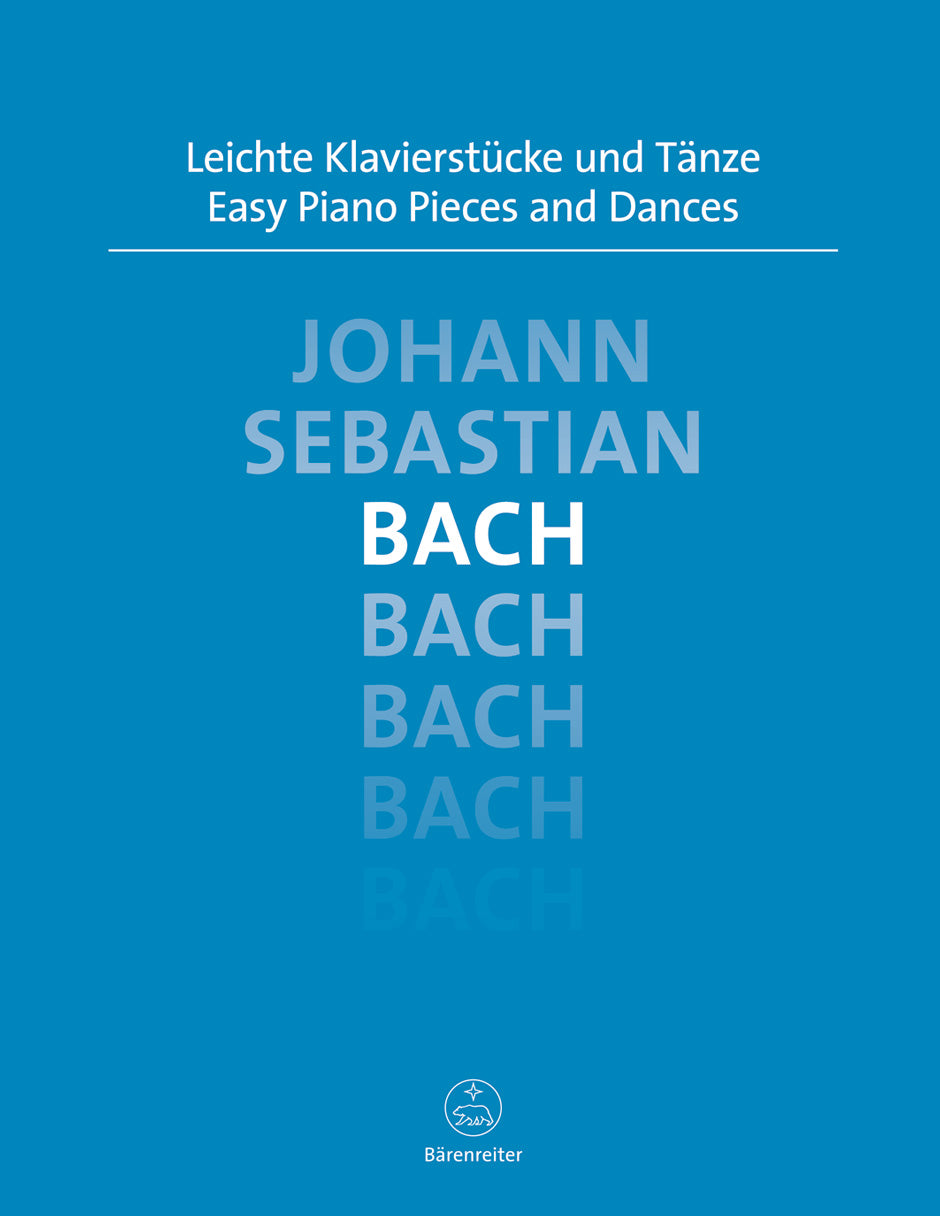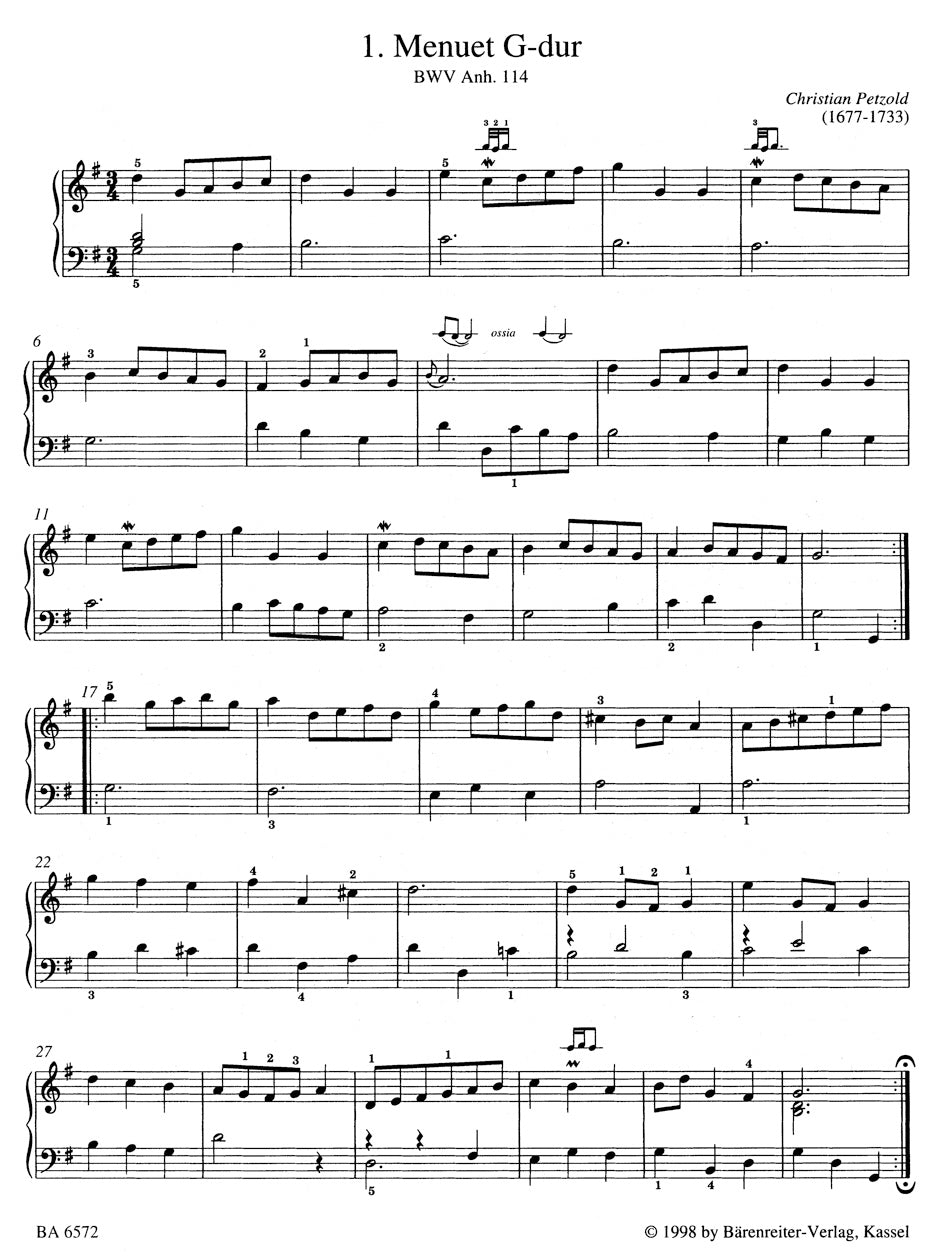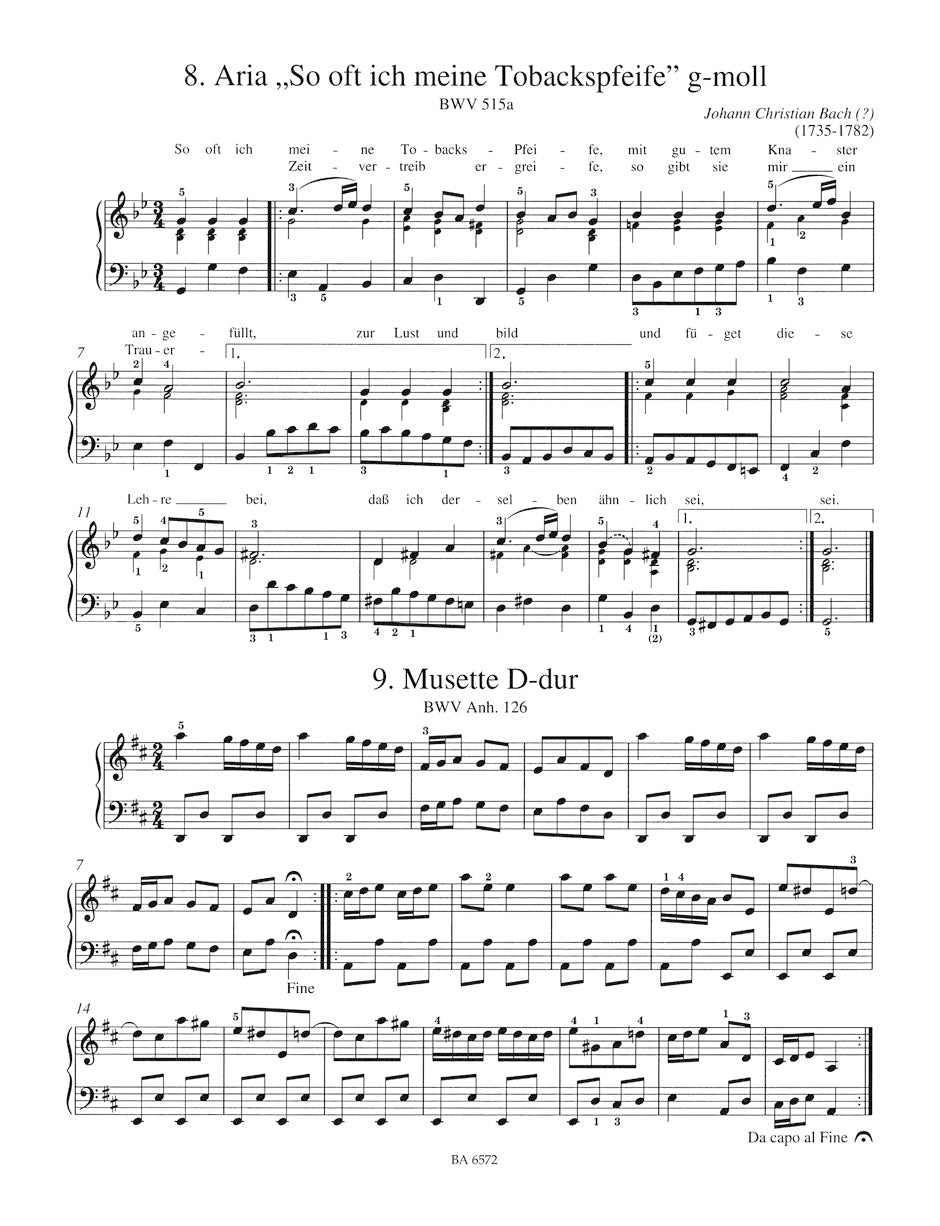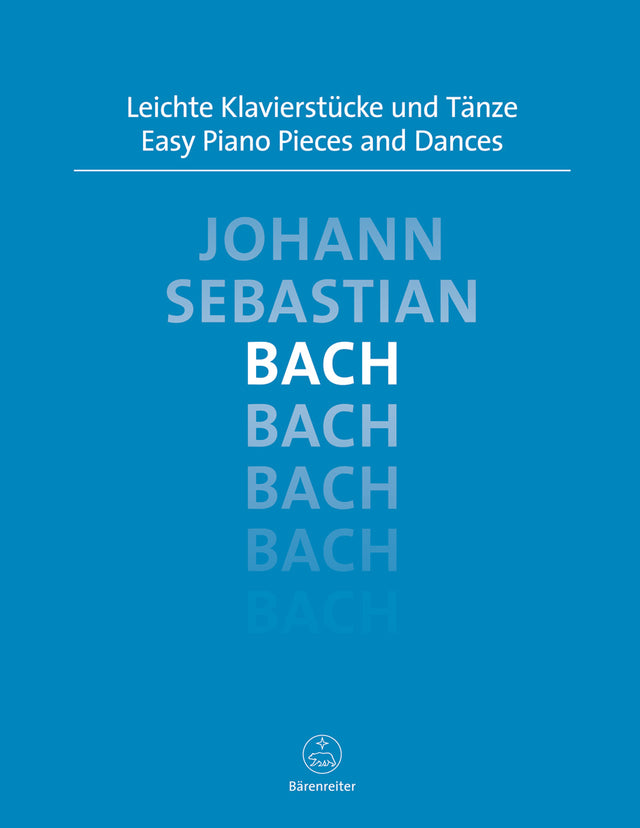Bach: Easy Piano Pieces and Dances
In stock and typically ships within 1 business day.
- Composer: Johann Sebastian Bach (1685-1750)
- Editor: Michael Töpel (1958-)
- Instrumentation: Piano, Violin, Harpsichord, Lute
- ISMN:
- Size: 9.1 x 11.8 inches
- Pages: 32
Description
This practical edition offers a selection of the easiest keyboard and dance pieces by Johann Sebastian Bach. Besides frequently heard "hits", such as the dance numbers from the Notenbüchlein for Anna Magdalena Bach, readers will discover many charming and easy-to-play pieces not found in other collections. Special emphasis has been placed on variety of forms and genres, there by turning the collection into a microcosm of Bach's music. A reliable edition that adds variety to piano lessons!
Works:
- Minuet in G Major, BWV 114
- Minuet in G Minor, BWV Anh. 115
- Minuet in G major, BWV Anh. 116
- March in D Major, BWV Anh. 122
- Chorale setting "Gib dich zufrieden und sei stille" in E minor, BWV 512
- Minuet in A Minor, BWV Anh. 120
- Menuet, BWV Anh. 132
- Aria "So oft ich meine Tobackspfeife" in G minor, BWV 515a
- Musette in D Major, BWV Anh. 126
- Bourrée (from Suite in E Minor), BWV 996
- Bourée from English Suite No. 1 in A Major, BWV 806
- Little Prelude in C Major, BWV 924
- Little Prelude in C Minor, BWV 934
- Little Prelude in D Minor, BWV 926
- Little Prelude in F Major, BWV 927
- Little Prelude in D Minor, BWV 935
- Little Prelude in C Major, BWV 939
- Little Prelude in A Minor, BWV 942
- Prelude, Fugue and Allegro in E-flat Major, BWV 998
- Allegro from Violin Sonata in G Major, BWV 1019
- Prelude in G Major, BWV 902a
- Fughetta, BWV 902
- Prelude and Fugue in C-sharp Major, BWV 872
Publishers use a lot of words to describe what they sell, and we know it can be confusing. We've tried to be as clear as possible to make sure you get exactly what you are looking for. Below are descriptions of the terms that we use to describe the various formats that music often comes in.
Choral Score
A score for vocalists that only contains the vocal lines. The instrumental parts are not there for reference. Generally, cheaper than a vocal score and requires multiple copies for purchase.
Facsimile
Reproductions of the original hand-written scores from the composer.
Full Score
For ensemble music, this indicates that the edition contains all parts on a single system (there are not separate parts for each player). In larger ensembles, this is for the conductor.
Hardcover
Hardbound. Generally either linen-covered or half-leather.
Orchestral Parts
Similar to a wind set, this is a collection of parts. In the case of strings, the numbers listed are the number of copies included, though generally these are available individually (often with minimum quantities required).
Paperback
When publishers offer multiple bindings (e.g. hardcover) or study scores, this is the "standard" version. If you're planning to play the music, this is probably what you want.
Performance / Playing Score
A score of the music containing all parts on one system, intended for players to share. There are not separate parts for each player.
Set of Parts
For ensemble music, this indicates that there are separate individual parts for each player.
Solo Part with Piano Reduction
For solo pieces with orchestra, this is a version that contains a piano reduction of the orchestra parts. For piano pieces, two copies are typically needed for performance.
Study Score
A small (think choral size) copy of the complete score meant for studying, and not playing. They make great add-ons when learning concertos and small chamber works.
Vocal Score
A score prepared for vocalists that includes the piano/organ part or a reduction of the instrumental parts.
Wind Set
For orchestral music, this is a collection of wind and percussion parts. The specific quantities of each instrument are notated.
With Audio
In addition to the printed music, the edition contains recordings of the pieces. This may be an included CD, or access to files on the internet.
With / Without Fingering (Markings)
Some publishers prepare two copies - a pure Urtext edition that includes no fingering (or bowing) suggestions and a lightly edited version that includes a minimal number of editorial markings.





